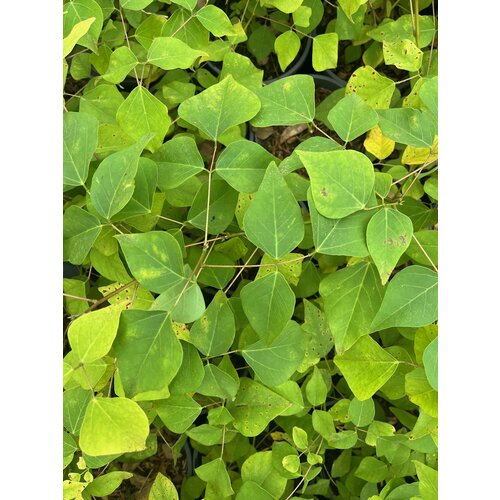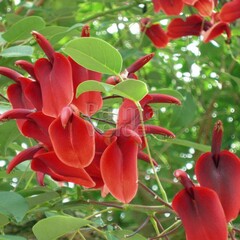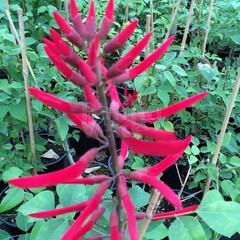The Erythrina corallodendron is an evergreen to semi-evergreen tree or shrub that can reach a height of 2 to 6 meters. The leaves are compound and consist of three oval to elongated leaflets. What truly makes this plant stand out are the bright red to orange-red flowers that grow in dense clusters. They resemble coral and are a striking sight.
The Erythrina corallodendron is native to parts of Africa and southwestern Saudi Arabia. However, it has been introduced and cultivated in many parts of the world for its ornamental value.
This plant thrives best in warm climates with plenty of sunlight. It can grow in various soil types, but the soil should be well-draining to prevent root damage from excess moisture. The Erythrina corallodendron can be drought-tolerant once mature, but regular watering is recommended to encourage growth and flowering.
The flowering of the Erythrina corallodendron typically occurs in the spring and early summer, although this can vary depending on climatic conditions. The red flowers are attractive to pollinating insects.
Due to its striking flowers, the Erythrina corallodendron is often used in landscaping and gardens. It can be planted as a solitary focal point or as a shade tree. Additionally, the plant holds some historical and cultural significance in certain regions.
The Erythrina corallodendron is generally not frost-hardy and does not tolerate cold well. In cold climates, the plant should be protected or kept indoors during the winter months.
It is important to note that the Erythrina corallodendron can be toxic, and caution should be exercised when handling it. The seeds and other parts of the plant contain toxic substances that can be harmful if ingested.








